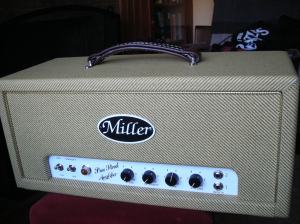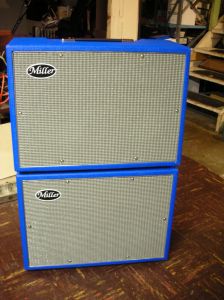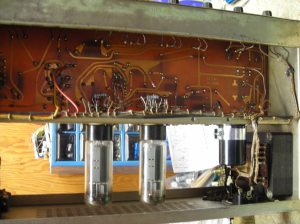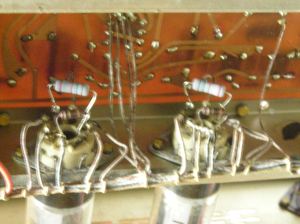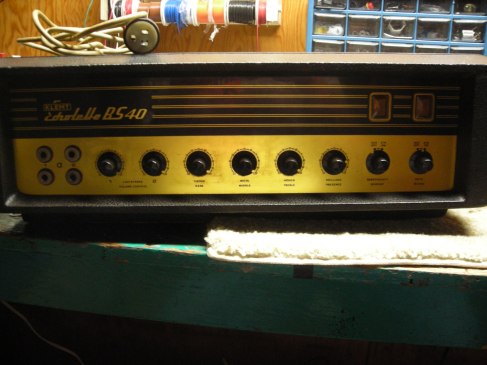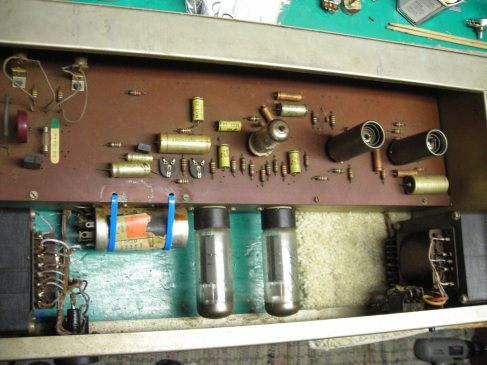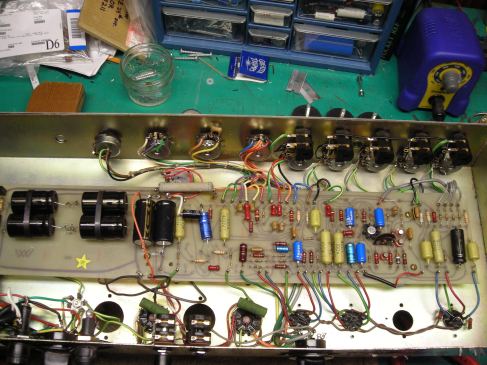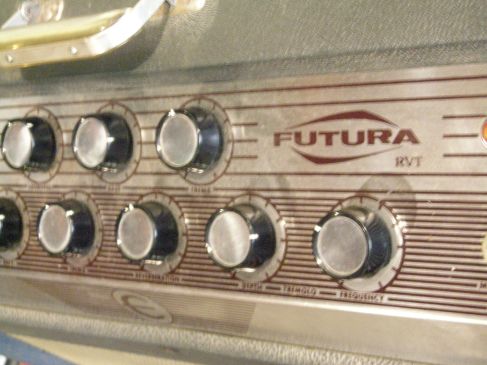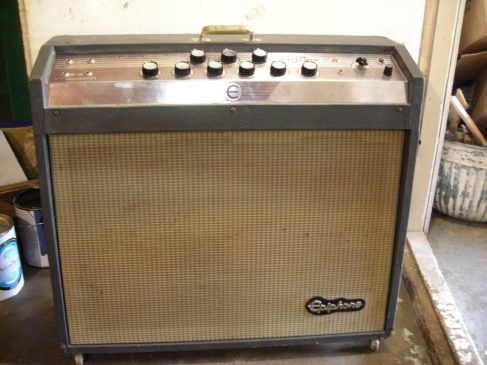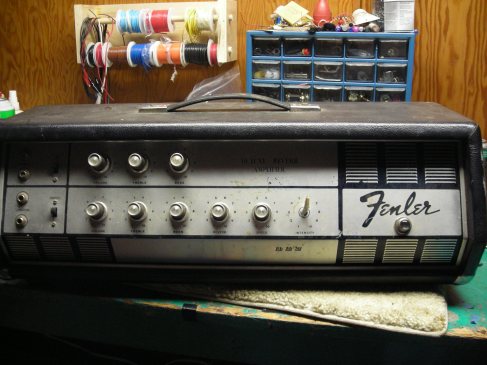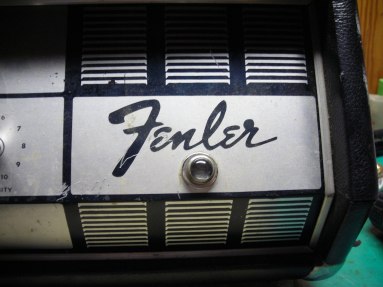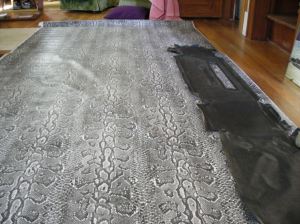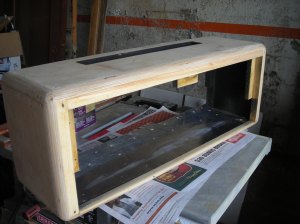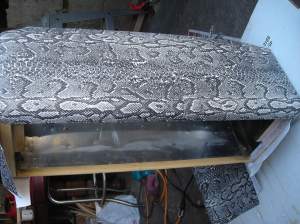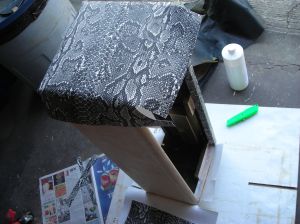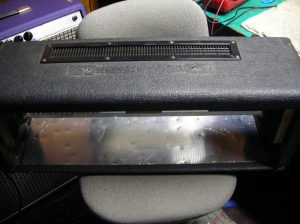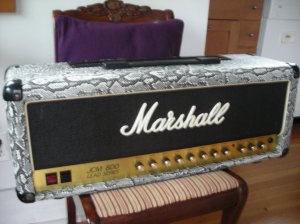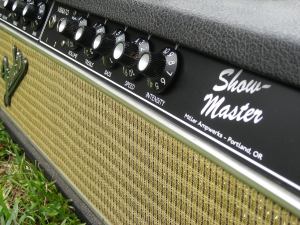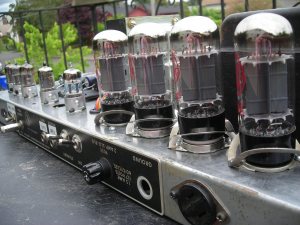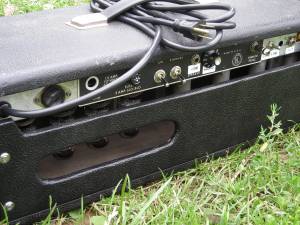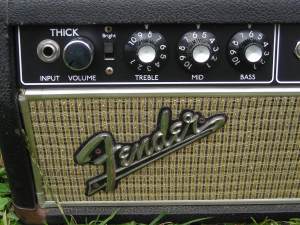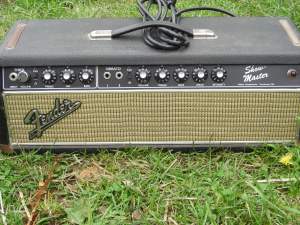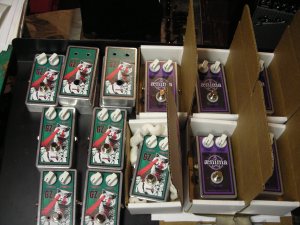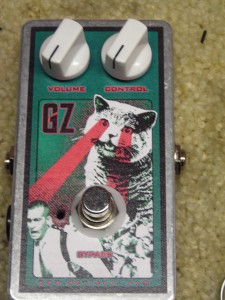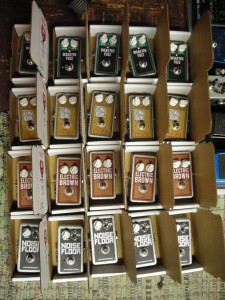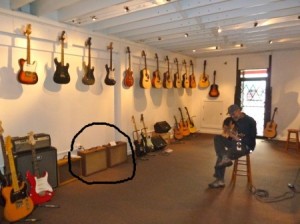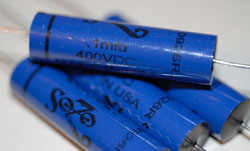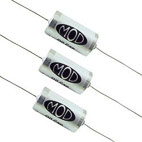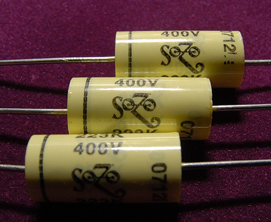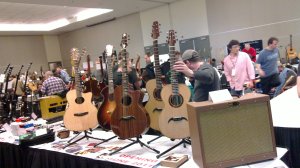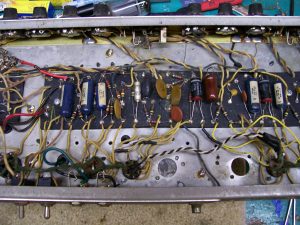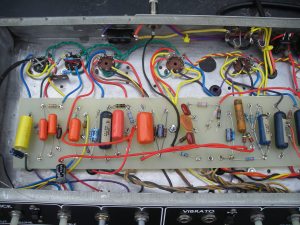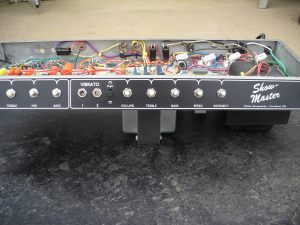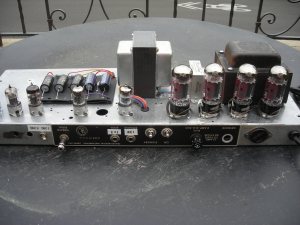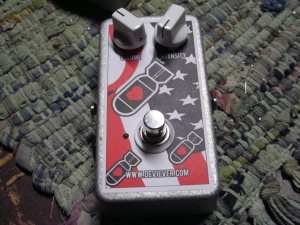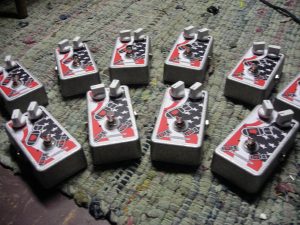Now for the things that they don’t tell you about!
After having completed this set of mods to a customers amp a chain of events happened that has reshaped my thoughts about doing mods in the future.
1) Under-Promise and Over Deliver – thinking that these mods would be a slam-dunk easy upgrade for said customer, has tempered my enthusiasm some what. There turned out to be a string of unintended consequences fueled by the beast itself (inexpensive pc board amp in a little tiny cabinet). First of all the act of removing the pc board loosened (I think) the solder joints on the ribbon cable supplying the grid/plate/cathode of the preamp stage, creating a horrible oscillation that appeared at the extremes of the volume and tone control rotation. It also had a underlying sizzle at all volumes, that never really went away. Now this was a used amp that I have no idea how many times it might have been opened up, and while nothing looked obvious, the effect was very noticeable and wasn’t caught by me, since I typically never run an amp with all the controls turned up. Who would do such a thing,?
Also, the new tonal shift with increased bass response exacerbated all the annoying cabinet rattle issues inherent in these little amps. Add to that the use of an aftermarket Eminence speaker that has a much greater voice coil travel than the stock speaker. With the new found bass, the speaker would flap at will hitting a little piece of the plastic grill cloth that extended out into the cutout and turned out slightly to create a kazoo like effect as the speaker travel now brought it into contact with said cloth making a horrible buzz. That I was blamed for because it didn’t do it before and now it does therefore it’s my fault! I had to dissasemble the amp with a very frustrated customer looking over my shoulder, while I’m sweating bullets trying desperately to find the offending cause. After removing the speaker and testing it out of the box and testing it with a different amp and testing the Blues Jr into a known good cabinet, the speaker was fine. Once reinstalled and carefully retorquing the speaker down to not twist the basket, plug in and horribnle buzzing again. That’s when I took it all apart again and had an Aha! moment when I inspected the gasket side of the speaker and noticing very little material, so when compressed the metal rim was up against the baffle and the speaker surround was almost flush with the face of the baffle.
Eminence, if your reading this, please use a thicker speaker gasket on your Red white and Blue line. Please? Anyway that’s when I saw the piece of extra grill cloth sticking up and once removed with a blade and the speaker reinstalled. No More Buzz!
2) Test amp at all extremes whether I think someone should play it like that or not. – Playing it after the mods at medium ranges of controls didn’t reveal the parasitic oscillations, and they only became apparent when both the Volume and Treble were on 12. Again who plays the amp like that?
3) Don’t say Yes to people who read something on the internet – Just because everybody is doing it, doesn’t mean it will work perfectly the first time. Remember, that peaple that are selling mod kits and instructions, don’t usually tell you about the ones that didn’t work or the ones that they had to spend a week to get it to work. They wouldn’t sell anymore kits. This is no jab at Bill M or his mods, it’s just that every so often, there will be that one amp that just defies description and refuses to behave. from my reading of his website, it’s obvious that he’s done hundreds of these mods and has researched them and documented the results with a good track record. however, general warnings aside sh#@$ can happen. I was very careful removing the board and still a problem arose that was not appearant or obvious as to a cause. Someone else had also replaced the input jack at some point and just wired jumpers to the board which also created problems as, each movement of those jumpers changed the degree and frequency of the offending noise. The shorting tab was also weak, so intermittant contact led to noise sometimes – no noise others. I had to replace that also and rewire a shielded cable across the board to the grid resistorof the first stage. That helped, but still didn’t get rid of the oscillation. playing with the bends in the cable, which is supposed to get rid of these problems didn’t. Very frustrating!! Plus, each time I thought i got it solved and sent the amp home, the customer would call me up and say it’s unplayable and you need to fix it! Now I tested it wtih my guitar and it sounded ok, each time. Let me qualify that, sounding ok to me includes some level of noise and bass fart out and all the other intrinsic things that go with a Blues Jr/Pro Jr, etc… so when I hear certain things, I’m thinking it’s just the normal noises in here. Others may not be so objective and consider any noise an afront and must be remedied, but remember, this was never meant to be the final statement in amp building. Ok, back to the story…..I mean why would I not check it out before sending out the door. I’m pulling my hair out, the owner is blue in the face and thinking “great, another hack repair guy”. Nobody is happy.
Once back at my shop, (for the 4th time in as many days) I hooked it up to the scope and could see the hash on the screen and it centered around the first preamp stage, except, I couldn’t find any appearant source of the noise.
Let me just say that these noise problems were different by degree at different locations and times. It would sound fine at one plug and awful at another. Or in this case sounded good at my house, taken home and be terrible at the owners house, Alright, back to the story.
That’s when I decided to remove the ribbon cable and reflow the solder joints. I hate this part, because the risk of screwing up a solder trace is real high, even being real careful not to overheat them, sometimes they just come loose. Carefully remove solder, gently slide out the ribbon, cut back a bit more plastic then reinsert the ends thru the solder pads. Careful, careful! Now here’s what made the difference, most ribbon connections are made with the ends just sticking straight up thru the pad then soldered. The wire isn’t actually touching the pad it’s just held in by solder. If they get stressed from moving them around or the amp gets jostled, these faux connections can break loose. They look solid, but these’s just enough of a poor connection to let parasitic noises a foothold. I put the ends of the cable thru then bent them over to actually touch the pads then soldered them. Success!! most of the oscillations gone. There was still a little sizzle left, and that was ultimately cured by wrapping an adhesive strip of copper foil around the cable like a shield, then soldered with a jumper that was attached to the chassis ground point. That got the background noise to the level of having the shielded cover installed, and when that was added, the amp was way quieter than before.
In conclusion: If it sounds too easy beware! Take your time and exhaust all testing before calling the customer to tell them it’s done. Lastly, warn all people requesting JoeBlow’s Super Duper Mods for XYZ amp that it may or may not work, I’m not responsible for you not liking the result . In other words I need a prenup-like disclaimer for any mods. Repairs are one thing, the amps already messed up, fixing it is easy. Tweaking an already working amp can result in loads of frustration for everyone involved, ruining an otherwise ok amp, starting a chain reaction of uninteded consequences and may cause one to swear off doing mods altogether.
I hope I can get this one behind me, Thanks for listening.
Matt
Posted in The Werks
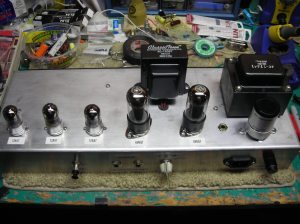
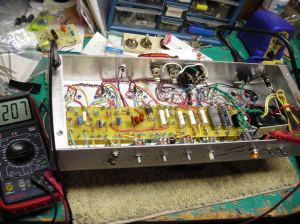 This project has been a real learning process and although, it’s been alot of work, it’s helping me to get a “process” together so I can have a chance at being able to build more per month than a single amp. It’s also been the spark to get this thing called Miller Ampwerks into a business and not just a hobby. Great hobby, but the point was actually growing it to a point that I might be able to support myself doing something I’m passionate about. Not just slogging thru my day, enduring a J.O.B. until at some point I keel over.
This project has been a real learning process and although, it’s been alot of work, it’s helping me to get a “process” together so I can have a chance at being able to build more per month than a single amp. It’s also been the spark to get this thing called Miller Ampwerks into a business and not just a hobby. Great hobby, but the point was actually growing it to a point that I might be able to support myself doing something I’m passionate about. Not just slogging thru my day, enduring a J.O.B. until at some point I keel over.
